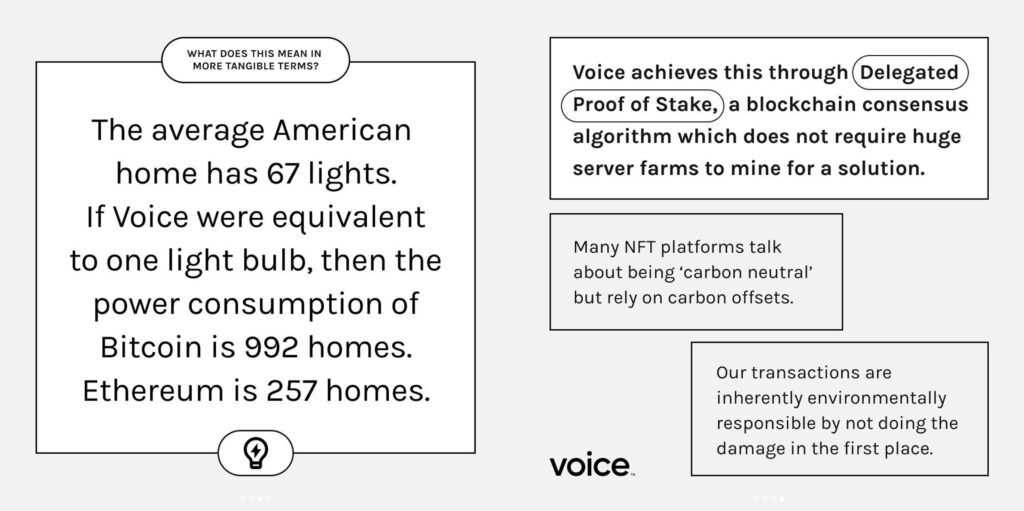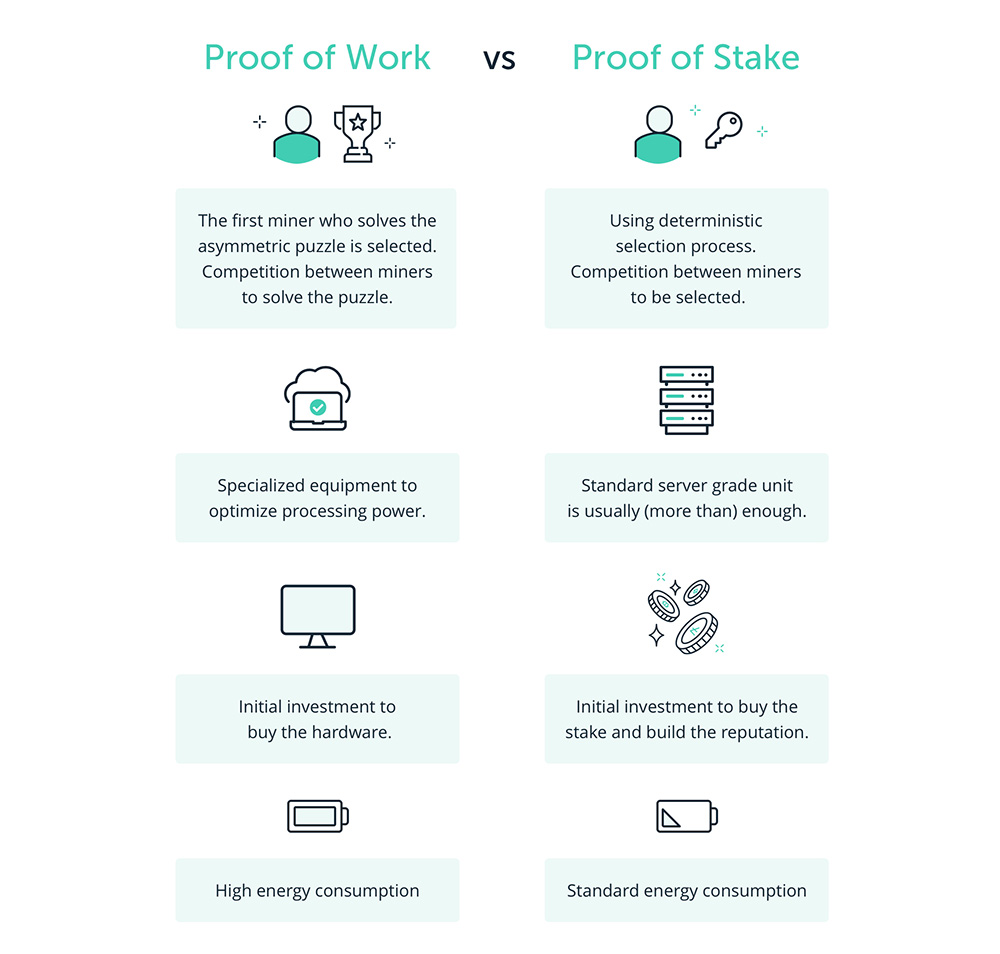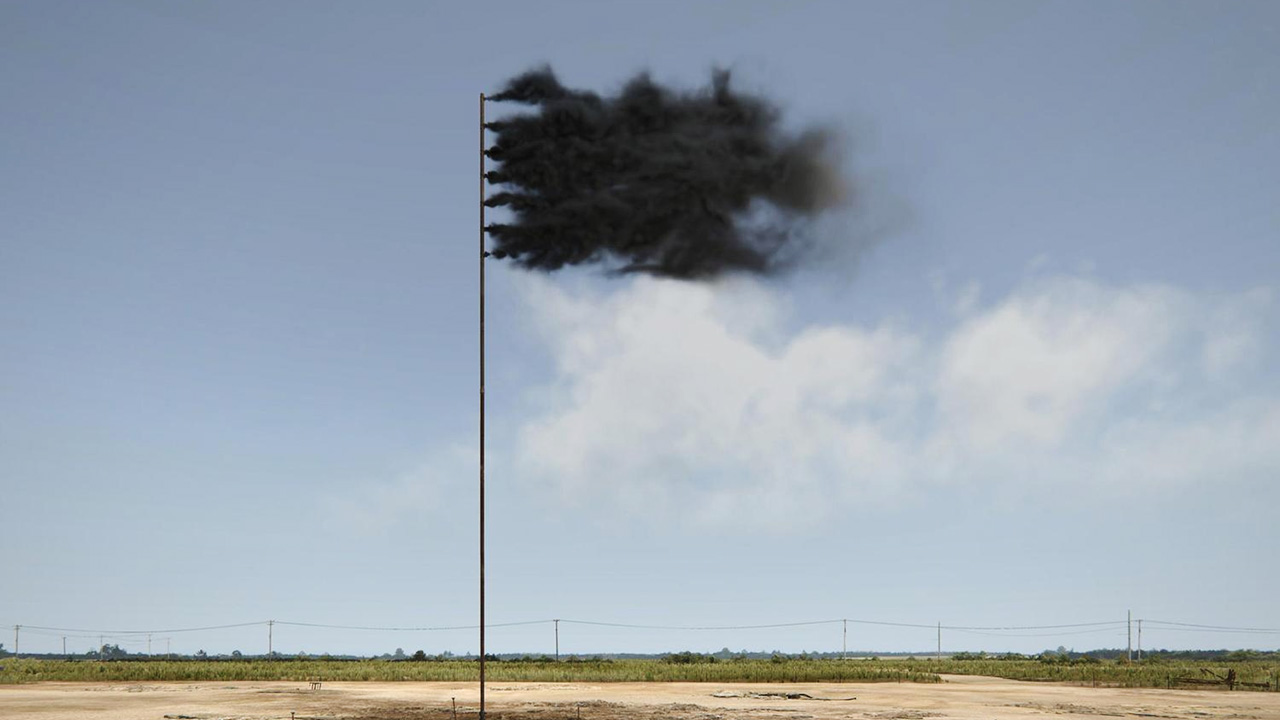In September, NFT marketplace Voice beta-launched. Voice is built on the eco-friendly EOSIO blockchain, offering carbon-neutral minting and “zero gas fees,” according to its website. By using a Delegated Proof of Stake consensus algorithm that doesn’t incentivize server farms to mine for blocks, EOSIO “enables low carbon emission blockchain transactions,” says Emily Drewry, Director of Marketing at Voice, since carbon footprints are only created when transaction blocks are added to the blockchain.
According to Drewry, Voice‘s beta-launch was successful, though negative NFT press has proved difficult to avoid. “Our biggest hurdles have been rewriting the narratives people have gathered from media coverage of NFTs, such as that all NFTs are environmentally damaging (not true), and that they’re only crypto art (also not true),” she says.
In response to intense spotlight on the environmental impact of NFTs, eco-friendly NFT platforms are rapidly springing up. As of October 2021, the annual carbon footprint of blockchain network Ethereum is 36.41 Mt CO2, equivalent to New Zealand’s carbon footprint, while Ethereum electrical energy usage is 76.65 TWh, equivalent to Bangladesh’s energy consumption.
Critics of NFTs say Proof of Work (PoW) security systems — the consensus mechanisms that validate transactions on blockchains by using miners’ computational resources — contribute to high amounts of greenhouse gas emissions. Marketplaces that utilize PoW systems include SuperRare and Nifty Gateway, both built on the Ethereum blockchain.

According to Voice, its Delegated Proof of Stake systems lower the carbon emissions of transactions on its platforms. Image: Voice on Instagram
Voice is one of many NFT marketplaces positioning themselves as eco-friendly/carbon neutral/environmentally sustainable alternatives to popular platforms. For example, NFT marketplace Abris.io is built on the carbon negative blockchain, Algorand, which utilizes “unique consensus mechanisms” to be more energy efficient. Another example, Lovada.art, is built on the “green” Cardano blockchain and claims to be “99.99 percent more energy efficient” than Ethereum, providing a full breakdown of their energy consumption on their website.
But according to Annabel Frassinelli Keenan, a fine art advisor and project manager, carbon neutral NFT marketplaces are only one part of the larger art market’s recognition of its environmental impact. “NFTs have relatively calculable carbon footprints compared to the production, sale, shipping, storage, and display of physical art,” she says.
Keenan notes that being carbon neutral is great, but a platform touting its carbon neutrality presents its own set of problems. “Where are the mines? What sort of energy do they use? Who are the miners? Who benefits from the network and what other potential downsides are there?” she asks. She says the biggest challenge for eco-friendly NFT platforms is competition: “Artists seeking to tap into the biggest audiences are often dependent upon the platforms themselves and don’t always have the option to work on smaller or newer eco-conscious platforms.”

Unlike the original Proof of Work consensus algorithms, Proof of Stake mechanisms validate new blocks based on a users’ stakes, thus lowering energy consumption. Image: Ledger
Keenan suggests NFT marketplaces switch from PoW to Proof of Stake (PoS) systems, which address the issue of environmental sustainability, like Kalamint and Hic et Nunc that are based on more carbon-efficient blockchains like Tezos and KodaDot. Ethereum has also announced it’s transitioning to a PoS model (no set date has been announced).
Drewry notes that NFT marketplaces can gradually become more eco-friendly, but it will take significant effort. “Many environmentally conscious or progressive networks using PoW have plans to move to PoS, as a long term solution,” she says. As for global expansion plans, Voice is currently aligning with regulations and laws before launching in the Asia market. To make NFTs accessible to all, Drewry says, “We have set forth a path to doing so: acknowledging that NFTs must be environmentally friendly, easy to use, robust, portable, and decentralized.”



